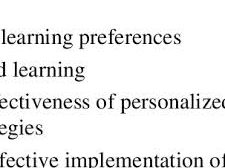Efficient shift planning is crucial for ensuring smooth operations in any business, especially those in industries that require round-the-clock work, such as retail, healthcare, and hospitality. A well-designed shift schedule can improve employee satisfaction, increase productivity, and ensure that staffing needs are met without overburdening your workforce. In this blog, we’ll dive into the importance of shift planning and share tips and tools to make the process easier and more effective.
What is Shift Planning?
Shift planning is the process of organizing and assigning shifts for employees to ensure that the business has the right number of people at the right times. This can involve deciding who works which hours, creating fair schedules, and managing potential conflicts or staffing shortages. Shift planning isn’t just about filling slots; it’s about balancing workload, employee preferences, legal requirements, and the overall goals of the organization.
Why is Shift Planning Important?
Effective shift planning benefits both businesses and employees. Here are a few reasons why it’s essential:
- Operational Efficiency: Proper scheduling ensures that business operations run smoothly by having enough staff to handle peak times and prevent under-staffing during slow periods.
- Employee Satisfaction: A fair and predictable schedule improves employee morale and work-life balance, reducing turnover and absenteeism.
- Cost Control: By forecasting labor needs accurately, businesses can avoid unnecessary overtime costs and ensure that staffing is cost-effective.
- Compliance with Labor Laws: Many regions have specific rules about work hours, overtime, and rest periods. Effective shift planning helps ensure compliance and prevents legal issues.
Key Elements of Shift Planning
- Staffing Levels: Identify how many employees are needed during each shift, considering peak hours and any special needs that may arise.
- Employee Availability: Take into account employees’ personal preferences, availability, and skillsets to ensure that the schedule works for everyone. This helps reduce scheduling conflicts and increases job satisfaction.
- Shift Types: Different businesses may require different types of shifts:
- Full-time shifts: Regular, fixed hours.
- Part-time shifts: Flexible, shorter hours.
- Overtime shifts: Extra hours beyond regular shifts, typically paid at a higher rate.
- Split shifts: Employees work a few hours, take a break, then return for another shift.
- Shift Rotation: Rotate shifts to prevent burnout and maintain fairness, especially in businesses operating 24/7. Rotating shifts can also help employees adjust to different work conditions.
- Legal Compliance: Ensure that shift planning aligns with labor laws regarding maximum work hours, rest periods, overtime, and scheduling breaks.
Tips for Effective Shift Planning
- Use Scheduling Software: Manual scheduling can be time-consuming and prone to errors. Shift planning software automates the process, reduces mistakes, and offers tools for real-time updates, making the entire process smoother and more efficient.
- Plan Ahead: Create shift schedules well in advance to give employees ample time to adjust their personal plans. This also helps reduce last-minute changes that could lead to confusion or frustration.
- Consider Employee Preferences: Incorporate employee input into the shift planning process by asking about preferred hours or days off. This can lead to better employee satisfaction and reduce the likelihood of scheduling conflicts.
- Build Flexibility Into the Schedule: Life is unpredictable. Build in some flexibility, such as swapping shifts, so employees can accommodate personal emergencies or last-minute changes.
- Monitor Employee Performance and Productivity: Keep track of employee performance and adjust shifts accordingly. This ensures that high-performing employees are scheduled during peak hours and that everyone is contributing effectively.
- Communicate Clearly: Share the shift schedule well in advance and ensure that all employees are aware of their shifts and any changes. Clear communication minimizes confusion and helps employees feel valued.
- Account for Absences: Have contingency plans in place for sick days, vacations, and other unforeseen absences. Having on-call staff or cross-training employees can help fill gaps when needed.
Shift Planning Tools
Using the right tools can simplify the shift planning process. There are numerous software options available to help businesses create and manage shift schedules efficiently. Here are a few popular ones:
- Deputy: A comprehensive scheduling tool that allows you to assign shifts, manage time-off requests, and communicate with employees.
- When I Work: This user-friendly app helps managers create schedules, track hours, and communicate with employees all in one place.
- Sling: A scheduling platform that offers shift templates, employee time tracking, and communication features.
- HotSchedules: This platform specializes in restaurant and hospitality scheduling, with features for shift swapping and compliance.
Common Shift Planning Challenges and How to Overcome Them
- Staffing Shortages: Unpredictable call-ins or absenteeism can cause staffing shortages. To prevent this, maintain a pool of backup employees or offer incentives for employees who are willing to work extra shifts.
- Employee Burnout: Long hours and inconsistent shifts can lead to burnout. Rotate shifts, provide adequate rest periods, and encourage employees to take time off when needed.
- Complexity of Scheduling: Managing different shift types, preferences, and labor laws can be complex. Using scheduling software and tools can simplify the process and prevent human errors.
Conclusion
Shift planning is a vital part of any business that relies on hourly or shift-based labor. When done right, it can boost productivity, reduce costs, and improve employee satisfaction. By taking the time to understand the key elements of shift planning and implementing best practices, businesses can build more effective schedules that meet their needs and the needs of their workforce. Whether you’re managing a small team or a large operation, proper shift planning is essential to long-term success.



